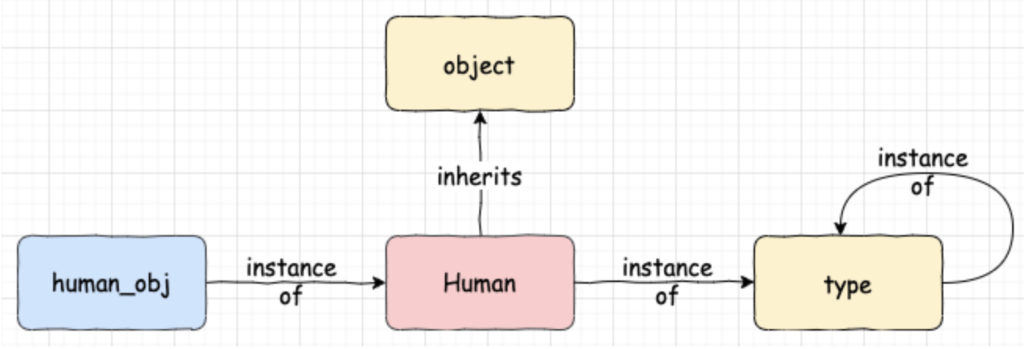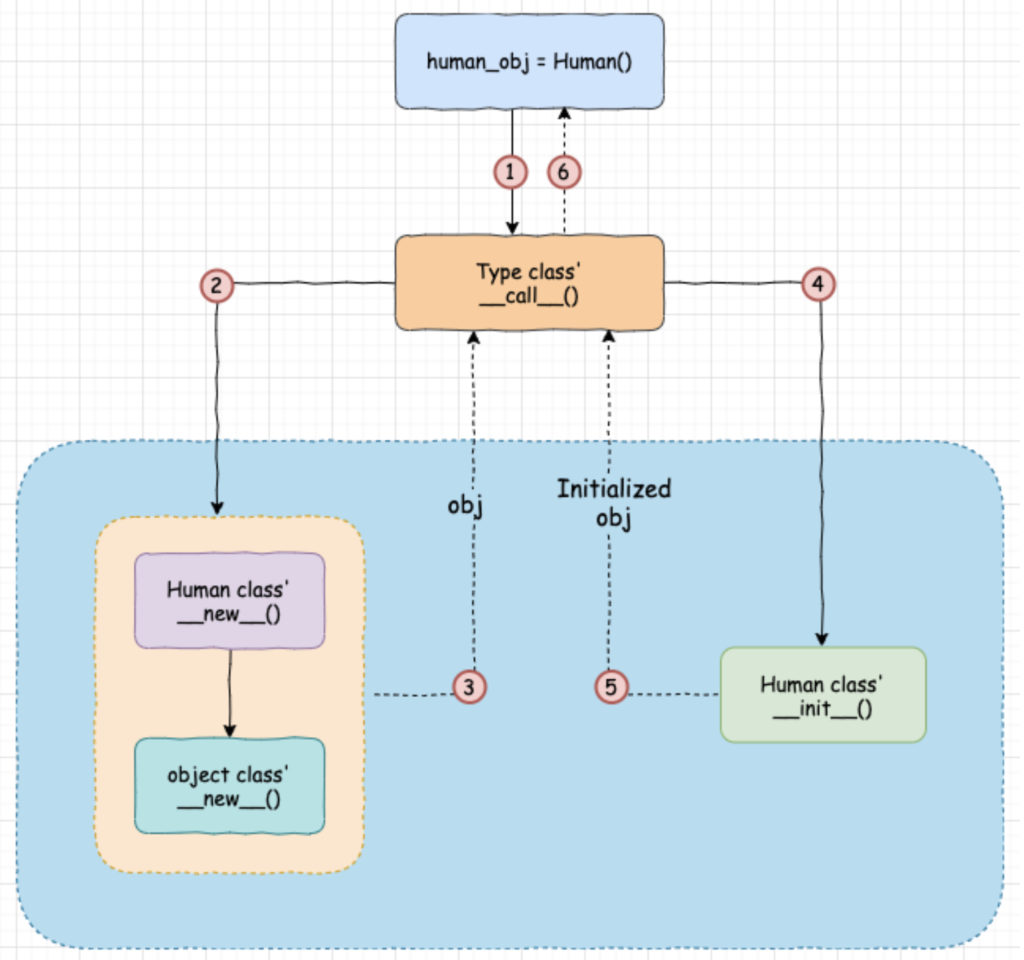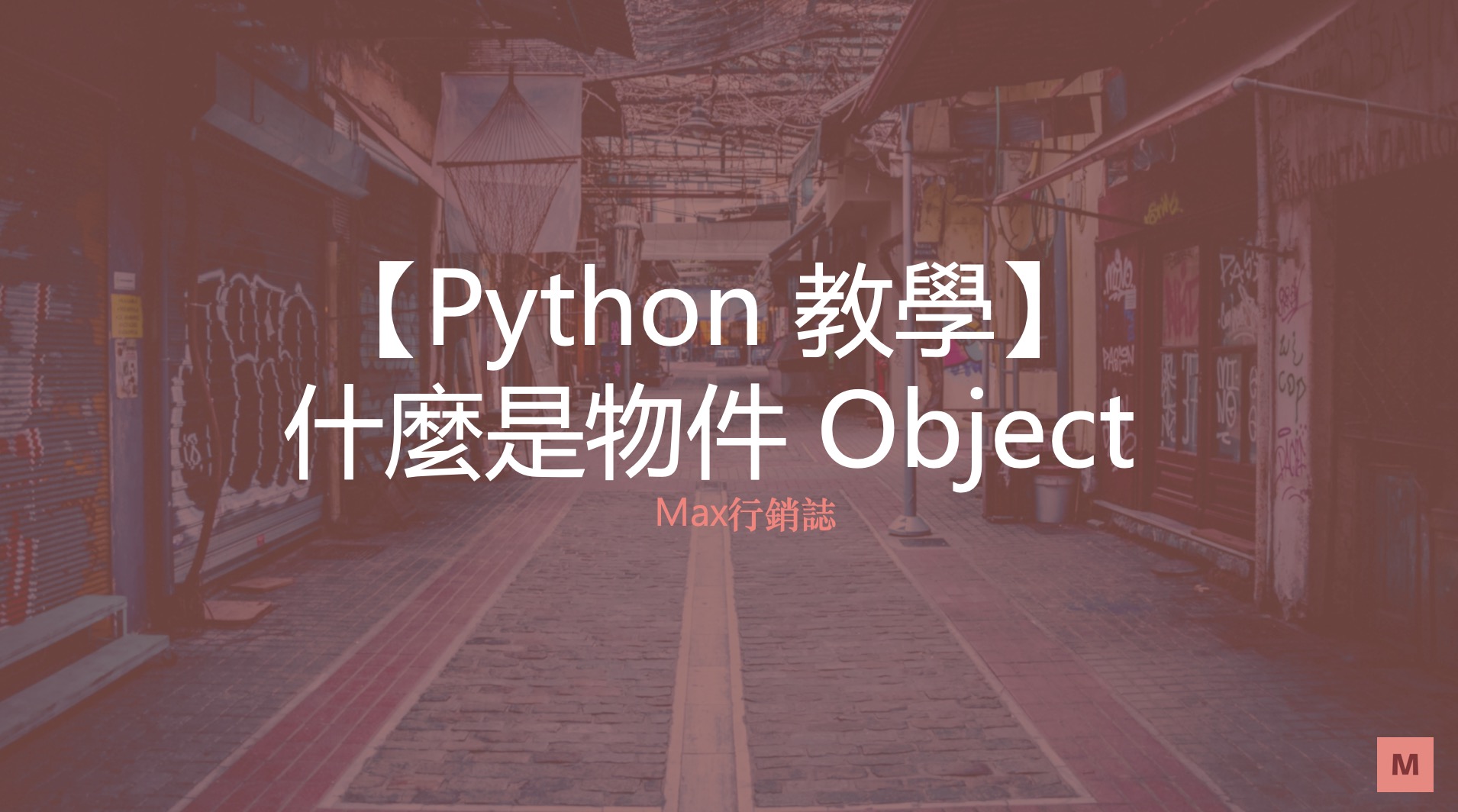Table
一. Python 一切皆為物件(Object)
Everything in python is object.
Classes, functions, and even simple data types, such as integer and float
不論是 class、 function、 int、 float… 在 Python 中一切都是物件 (Object)
首先我們看看 wiki 維基百科中,解釋什麼是物件 (Object):
In computer science, an object can be a variable, a data structure, a function, or a method, and as such, is a value in memory referenced by an identifier.
https://en.wikipedia.org/wiki/Object_(computer_science)
如果以白話文來解釋,什麼是物件 (Object) 的話:
有個我們每天幾乎都會用的名詞「東西」。東西可以代表著是一張桌子、椅子、電腦、或是身邊任何物品都可以叫東西。你可以試試看給個給東西一個白話文解釋看看…
上述物件就像是東西的例子,是我從這篇文章看到的,覺得很生活化,推薦大家閱讀:淺談 Python Metaclass
二. 物件可以擁有屬性 (Attributes) 和方法 (Methods)
Everything object can have attributes and methods.
* Attribute: A variable stored in an instance or class is called an attribute.
* Method: A function stored in an instance or class is called a method.
物件「可以」擁有屬性和方法,「可以」的意思代表不強制一定要有;而屬性 (Attributes) 代表存在 Object 裡的變數,方法 (Method) 則代表存在 Object 裡的 function。
以白話文來說,如果東西是一隻狗,則屬性就像是狗身上的顏色、年紀、性別、體重,而方法就像是狗的行為,例如會跑、會叫、會吃和睡。
而 Python 會將這些屬性和方法存在字典中,我們可以調用 dir(Demo) 或 Demo.__dict__ 來查看。
|
1 2 3 4 5 6 7 8 9 10 |
class Demo: pass dir(Demo) # Output: ['__class__', '__delattr__', '__dict__', '__dir__', '__doc__', '__eq__', '__format__', '__ge__', '__getattribute__', '__gt__', '__hash__', '__init__', '__init_subclass__', '__le__', '__lt__', '__module__', '__ne__', '__new__', '__reduce__', ...'] |
三. 物件擁有型別 (datatype)
一但有了物件 (object) 存在,就一定會存在著型別 (datatype)。譬如說我們可以說這個東西是一個杯子、那個東西是一個椅子或這個東西是一隻狗等等,杯子、椅子和狗就是這些東西的型別。
在 Python 中我們可以使用 type 來查看物件 (object) 的型別:
|
1 2 3 4 5 6 7 8 9 10 11 12 13 14 |
type(9) # Output: <class 'int'> def bar(): pass type(bar) # Output: <class 'function'> class Foo: pass type(Foo()) # Output: <class '__main__.Foo'> |
數字的型別是 int、函式的型別是 function,但當我們嘗試把 type(int) 或 type(object) 時卻會發現型別是 type 呢?
|
1 2 3 4 |
type(Foo) # Output: <class 'type'> type(int) # Output: <class 'type'> type(float) # Output: <class 'type'> type(object) # Output: <class 'type'> |
接下來我們會在下一小節 Metaclass 中解釋為什麼 type 的型態會是 type。
四. 什麼是 Metaclass 元類
A metaclass is a class whose instances are classes. Just as an ordinary class defines the behavior of certain objects, a metaclass defines the behavior of certain classes and their instances.
https://en.wikipedia.org/wiki/Metaclass
所有的 class 是由 Metaclass 所 instance 出來的。
In Python, the builtin class type is a metaclass.
在 Python 中 built-in 的 type 就是 Metaclass;也就是說 type 不只可以拿回傳型別外,還可被用來創造 class,這也解釋了為什麼 type(int) 或 type(object) 會回傳的型別是 type 了。
舉個例子,當我們今天寫 class Human 時:
|
1 2 |
class Human: name = "Max" |
其實背後是 instance type 實例化而來type(class_name, class_base, attribute):
|
1 2 3 4 5 6 7 |
Human = type( "Human", (object,), { "name": "Max", }, ) |
補張流程圖,或許會更清楚一些:

- 當我們在寫
class Human,會透過 built-in type instance (圖右) 和繼承 class object (built-in object class 也是 type instance 出來的) (圖上) 所 create Human 出來 (圖中)。 - 當我們在
human_obj = Human()(圖左) 時,則是再 instance 剛剛由 type() 出的 Human。
推薦延伸閱讀: Understanding Metaclasses in Python
五. Python Object 實例化的過程
在上一小節,我們理解了class Human 是由 type 所 instance 出來。接下來我們將著重於 human_obj = Human() 的過程。

流程(1) 當呼叫 Human() 時,會使用 type class 裡的 __call__ method。
流程(2) type.__call__ 裡面首先會呼叫 __new__ method,如果 Human class 裡面有沒有定義 __new__ ,則會從 object class 中尋找並呼叫。
流程(3) 返回 __new__ 所 create 的 obj
流程(4) 返回後 type.__call__ 會呼叫 __init___ method 進行初始化
流程(5) 返回 __init__ 初始化後的 obj
流程(6) 最後 __call__ 返回 obj
最後希望這張圖的講解,能帶大家理解物件實例化過程中:使用(__call__)、建立(__new__)、初始化(__init__) 的過程,是由不同的方法來負責執行。
關於 Python 物件導向教學的延伸閱讀:
▍本站的其他相關教學:
- [Python教學] 基礎指南全集
- [Python教學] 物件導向 – Class 類的 封裝 / 繼承 / 多型
- [Python教學] 裝飾詞原理到應用
- [Python教學] @property 是什麼? 使用場景和用法介紹
- [Python教學] Class / Static / Abstract Method 初探
- [Python教學] dataclass 是什麼? (python 3.7+)
▍本篇參考資料:
- 陌生的 metaclass
- 淺談 Python Metaclass
- Python Document – Data model
- Python-Unbound/Bound method object
- Understanding Object Instantiation and Metaclasses in Python
那 [Python 基礎] 什麼是物件 Object 結束囉,感謝收看!
如有任何問題,歡迎底下留言或私訊,我會盡快回覆您
